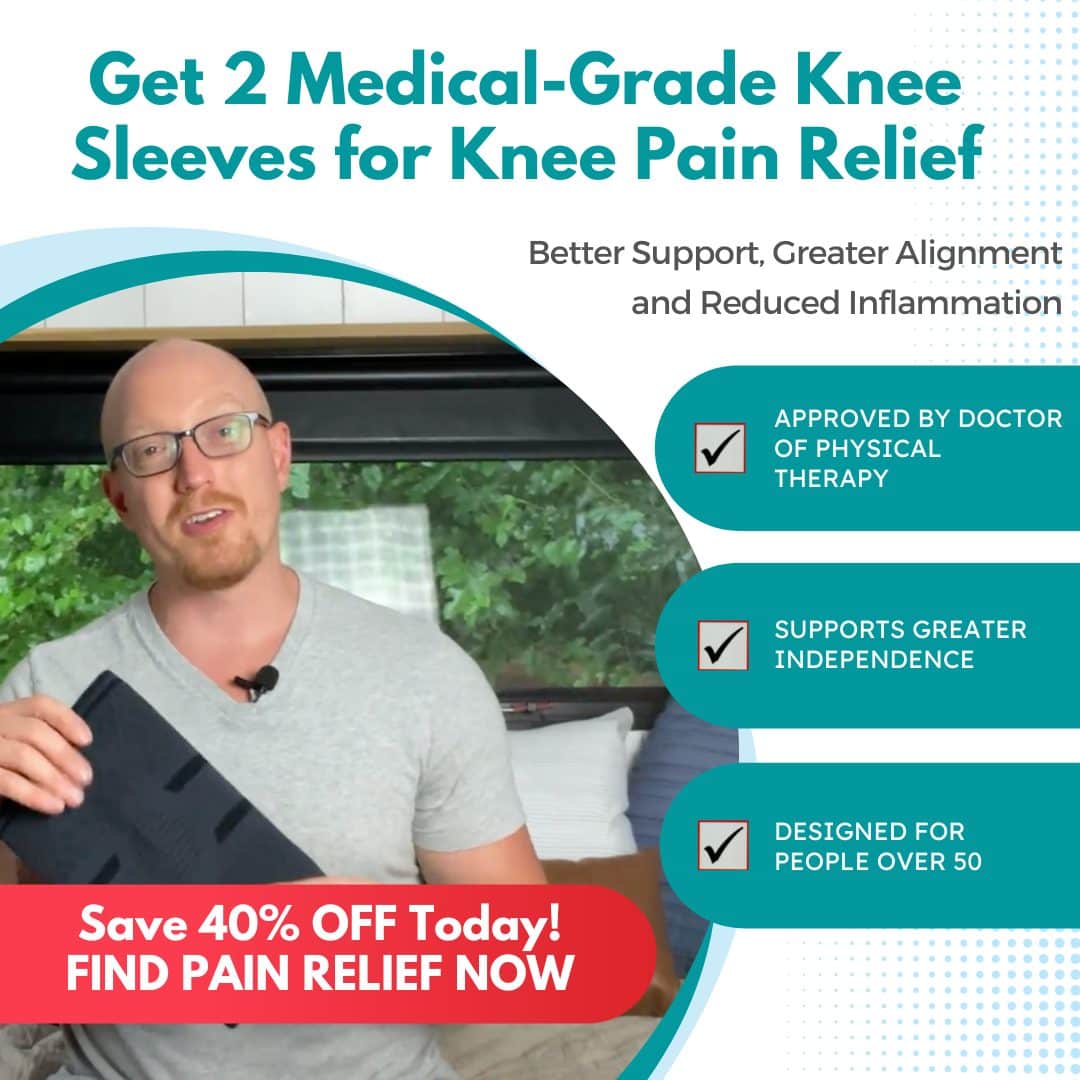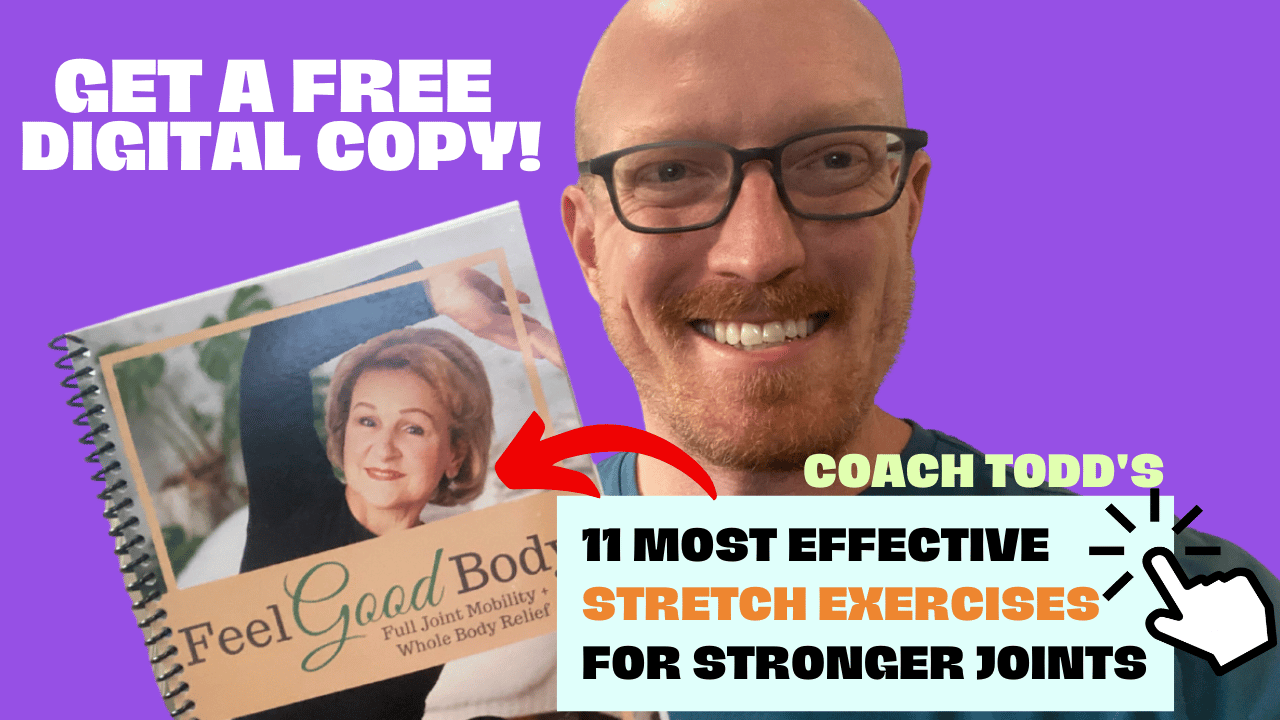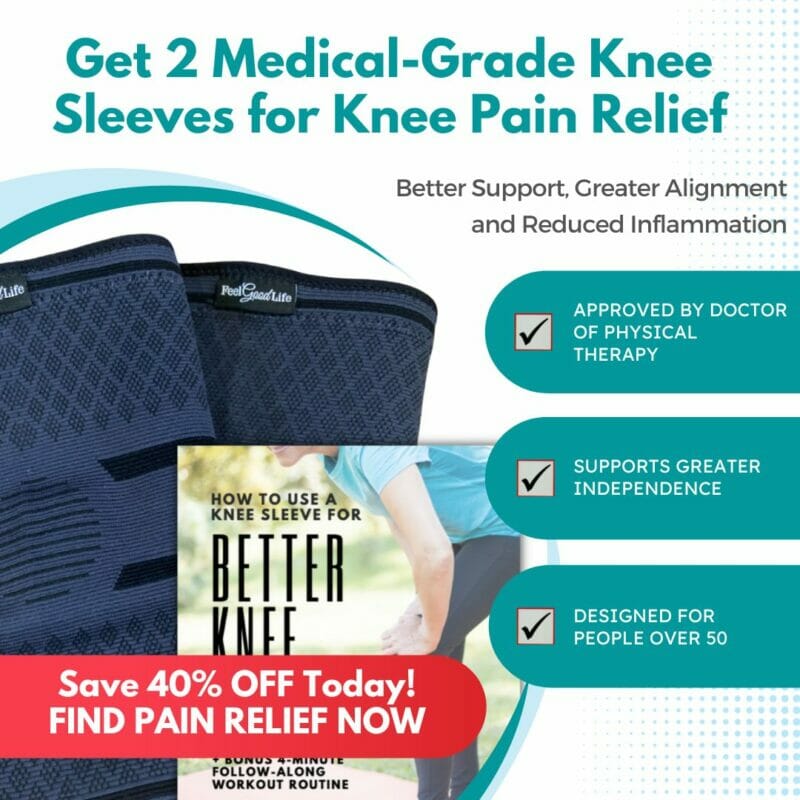Free download: Top 10 Natural & Easy Remedies for Joint Pain from Home. Learn these helpful remedies.
Estimated Reading Time: 8 minutes read
If you’ve ever had elbow pain, you know it’s not much fun. Often, this pain comes from the soft parts of your elbow, like tendons, getting upset or worn out. Usually, this can be fixed with rest.
But you don’t want to rest too much. If you do, your elbow might get stiff, and the muscles around it might get weak. This can make your elbow problems come back later on. That’s why it’s good to do exercises to keep your elbow strong and moving well.
Sometimes, elbow pain can last a long time and might mean you have arthritis. This would need special treatment. In this article, we’ll talk about why your elbow might hurt, how to make it feel better, and exercises to keep your elbow strong and healthy.
Table of Contents
Causes of Aching Elbows
Elbow pain can arise from a variety of conditions and activities. Here are some common causes:
- Overuse: Repetitive movements, especially those that involve flexing or extending the wrist, can lead to overuse of the muscles and tendons of the forearm. This continuous strain can eventually cause pain in the elbow.
- Physical Injury: Accidents or sports-related activities can result in injuries to the elbow, leading to immediate or progressive pain.
- Specific Conditions: Certain medical conditions like tennis elbow, golfer’s elbow, and arthritis can result in elbow pain. Tennis elbow is caused by inflammation of the tendons on the outside of the elbow, while golfer’s elbow involves inflammation on the inside. Arthritis, on the other hand, is a broad category of conditions that cause joint pain and inflammation, including the elbow.
- Age: Our joints can wear down as we age, causing conditions like osteoarthritis. This wear and tear can lead to elbow pain.
- Lifestyle Factors: Certain professions or hobbies that require repetitive arm movements or lifting heavy items can increase the risk of developing elbow pain.
Each of these causes can contribute to the discomfort and inconvenience of elbow pain. Recognizing the cause is the first step toward effective treatment and relief.
Treating Common Causes of Elbow Pain
The treatment strategies for elbow pain can vary depending on the underlying cause. However, several broad approaches have been found effective across a range of conditions.
- Rest: Resting the affected area is one of the simplest yet most effective treatment strategies. This doesn’t necessarily mean immobilization but rather avoiding activities that exacerbate pain or discomfort. Giving your muscles and joints a break can facilitate the body’s natural healing process.
- Heat Therapy: Heat is known to increase blood flow, which, in turn, can expedite the healing process by bringing vital nutrients to the affected area. Applying a heating pad or a hot pack to the elbow can be a beneficial treatment method, especially for muscle strains and arthritis. Remember to protect your skin with a thin cloth to prevent burns.
- Stretching: Stretching can help relieve pain and stiffness associated with muscle strains and overuse injuries. This can involve a series of simple movements, like straightening your elbow, turning your palm towards the floor, and gently pulling your fingers towards your body. Such exercises should be held for about 30 seconds for optimal benefit.
- Bracing: An arm brace can effectively limit movement and support healing muscles and tendons. These braces can be found at most drugstores and can be particularly beneficial if you’re required to use your arm repetitively for work or hobbies.
- Over-the-counter Medication: Over-the-counter nonsteroidal anti-inflammatory drugs (NSAIDs) can help reduce inflammation and manage pain. However, these should be used as a temporary solution, and it’s recommended to consult a doctor if the pain persists.
- Physical Therapy: If your elbow pain is chronic or caused by a specific condition like tennis elbow or arthritis, you may benefit from physical therapy. A trained physical therapist can design an exercise regimen to strengthen your muscles, improve flexibility, and reduce pain.
Elbow Pain-Specific Techniques
Depending on the location of the pain, different techniques can help:
1. If there’s aching on the outside of the elbow, use the back (dull side) of a butter knife or your other hand to massage tight muscles on the back of your forearm. That will take pressure off the elbow.
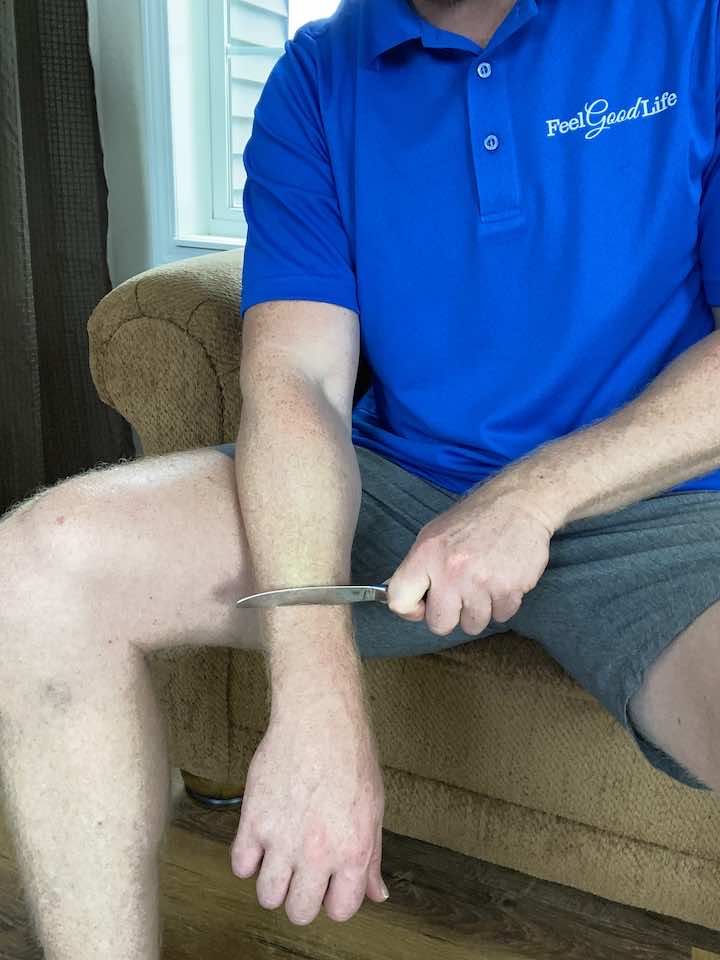
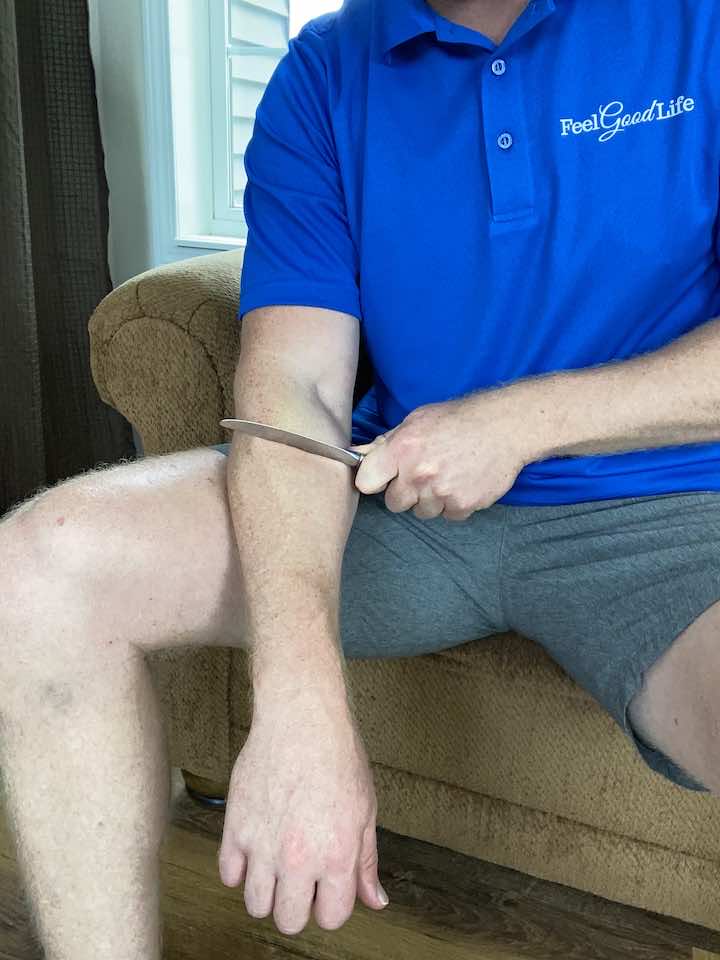
2. If there’s aching on the inside of the elbow, use the back (dull side) of a butter knife or your other hand to massage tight muscles on the front of your forearm. That will take pressure off the elbow.
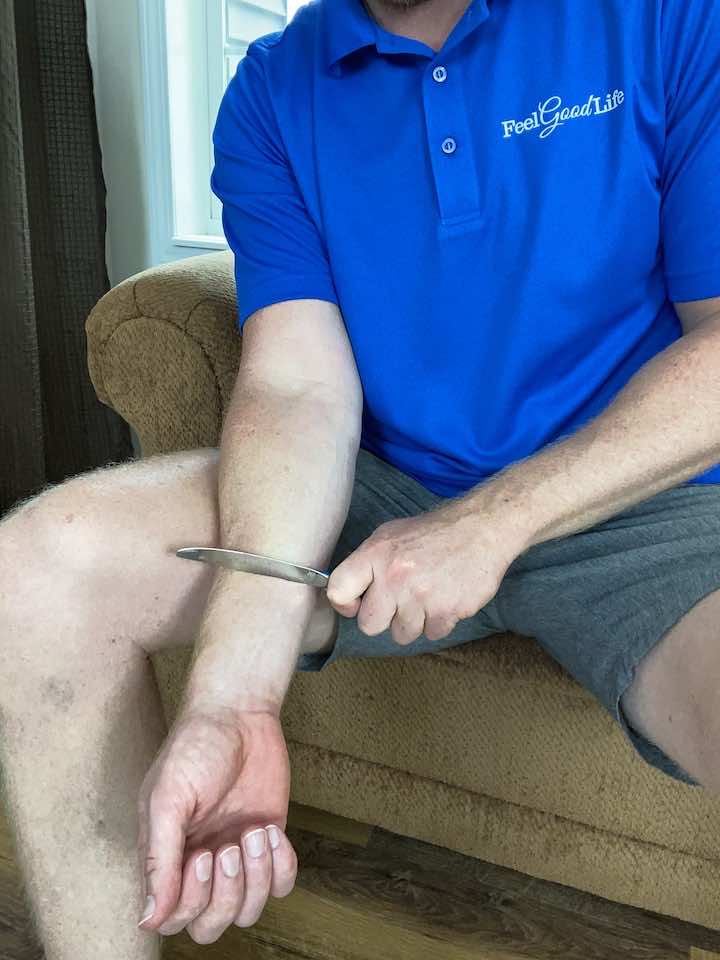
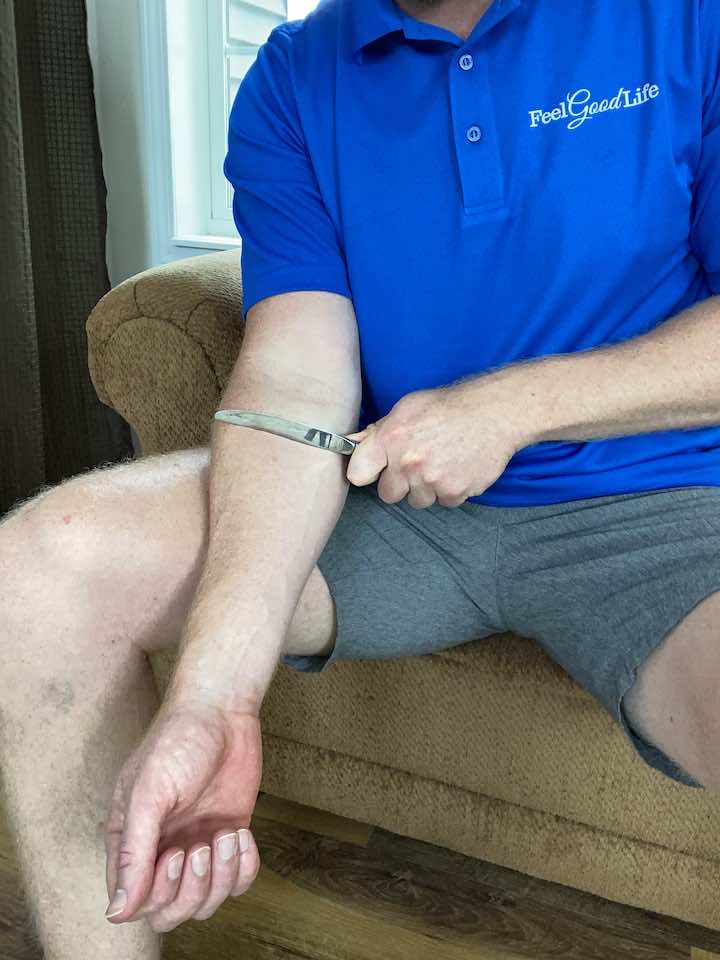
3. If there’s aching when you press along the elbow in the back and pain in your pinky and ring finger, the ulnar nerve is flared up. Perform ulnar nerve glides, 10 repetitions, and 3 sets.
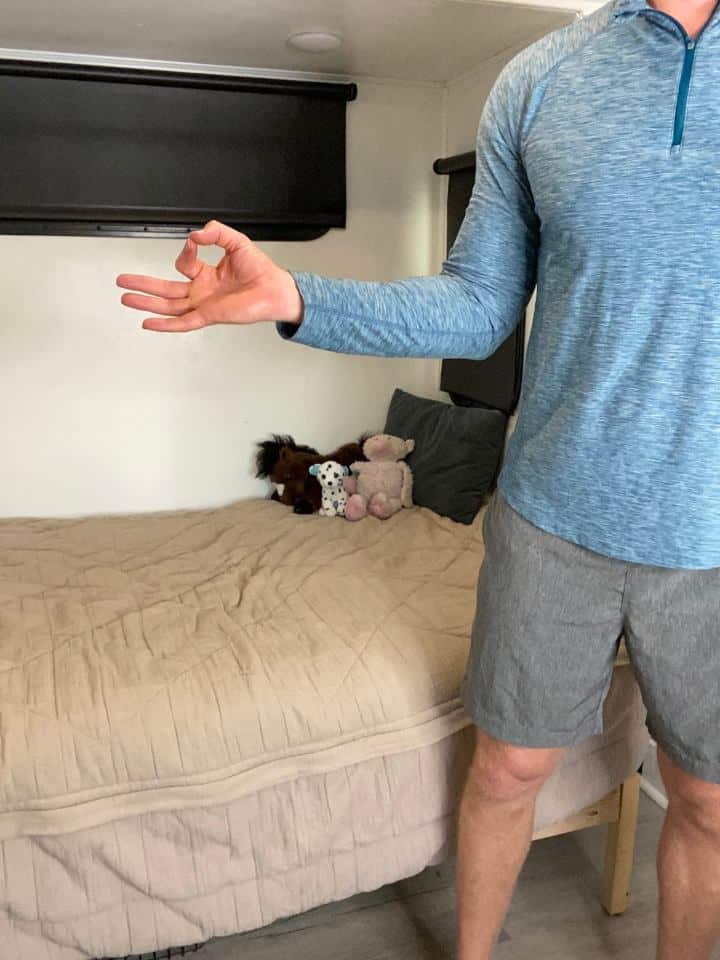
Step 1: Your starting position will be holding your arm out to the side and gently bend the elbow. Make a circle with your thumb and index finger touching as if you’re saying you’re “A-okay.” Your palm should be facing out to the side, away from you.
Step 2: Begin to move the hand towards your head while extending the wrist back towards you. Make sure to keep your “A-okay” sign. The fingers should now be pointing towards you with the palm facing the ceiling.


Step 3: From here, bend the neck so that your head moves away from the working arm.
Step 4: To add an extra stretch to the nerve, slightly lift your bent elbow up towards the ceiling.

Strengthening Exercises
Including the following exercises in your routine can help strengthen your elbow and forearm muscles, further preventing discomfort:
1. Wrist Flexion Stretch with Resistance Band
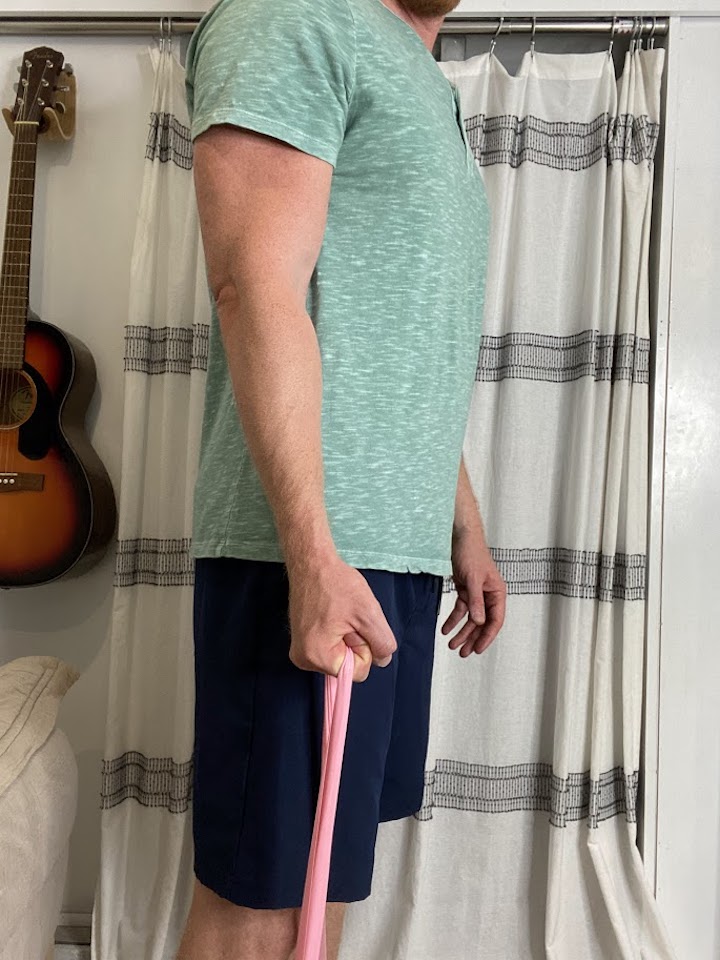
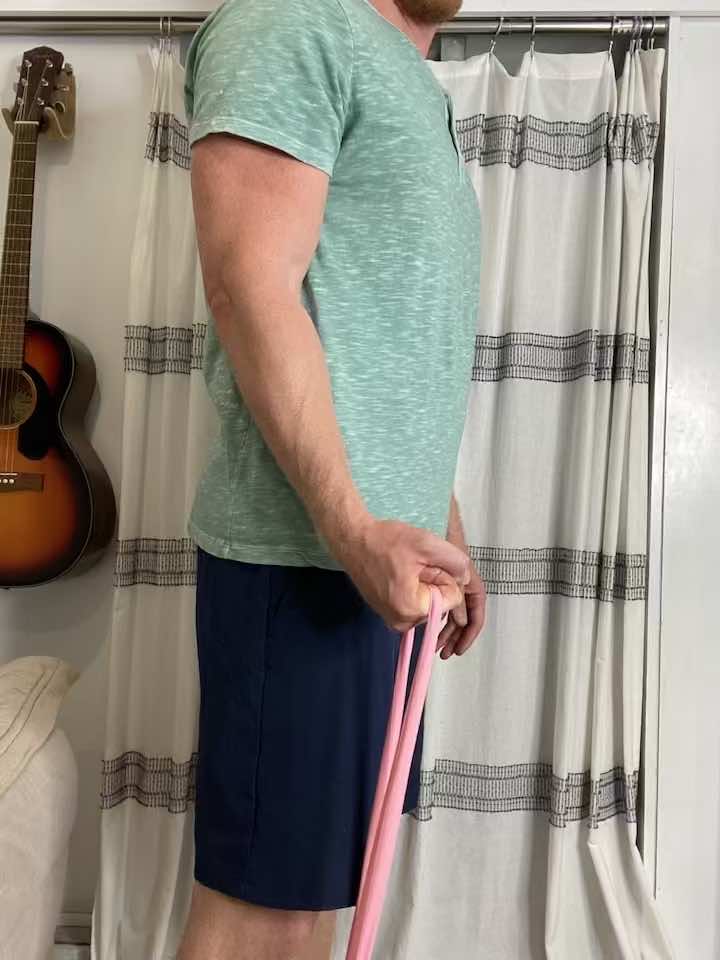
- Position yourself just like with wrist extension, only this time the palm should be facing up towards the ceiling, with the wrist straight.
- You can again use either a resistance band (light, medium or heavy) anchored under your foot or a light-free weight (2-3 lb).
- Slowly flex the wrist (moving the palm towards you), then return to neutral.
- Repeat 10 repetitions for 3 sets.
2. Wrist Extension Stretch with Resistance Band
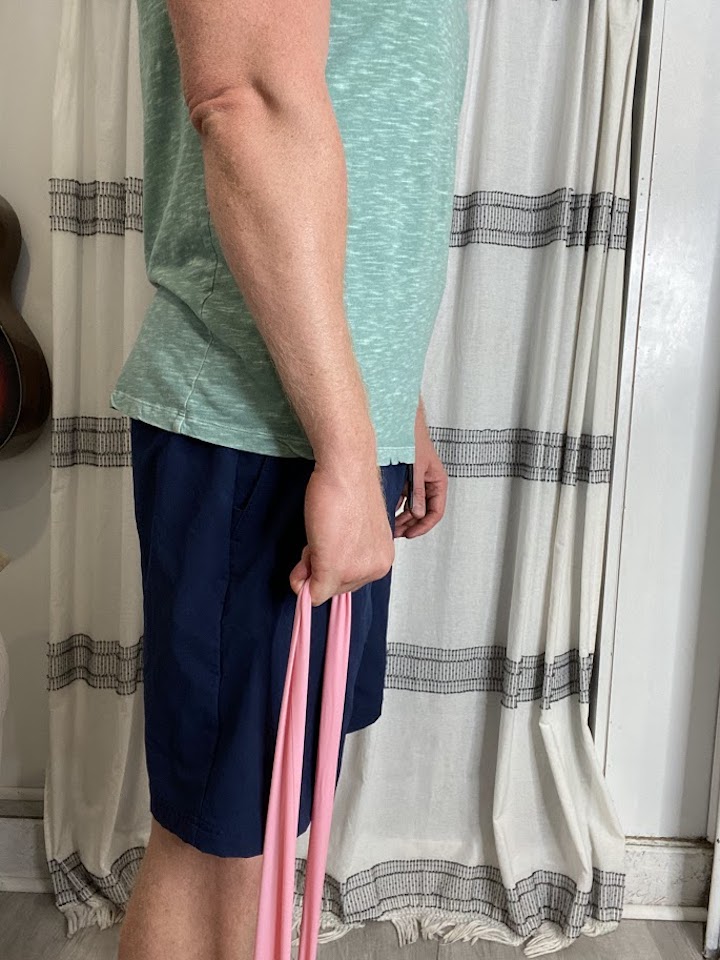
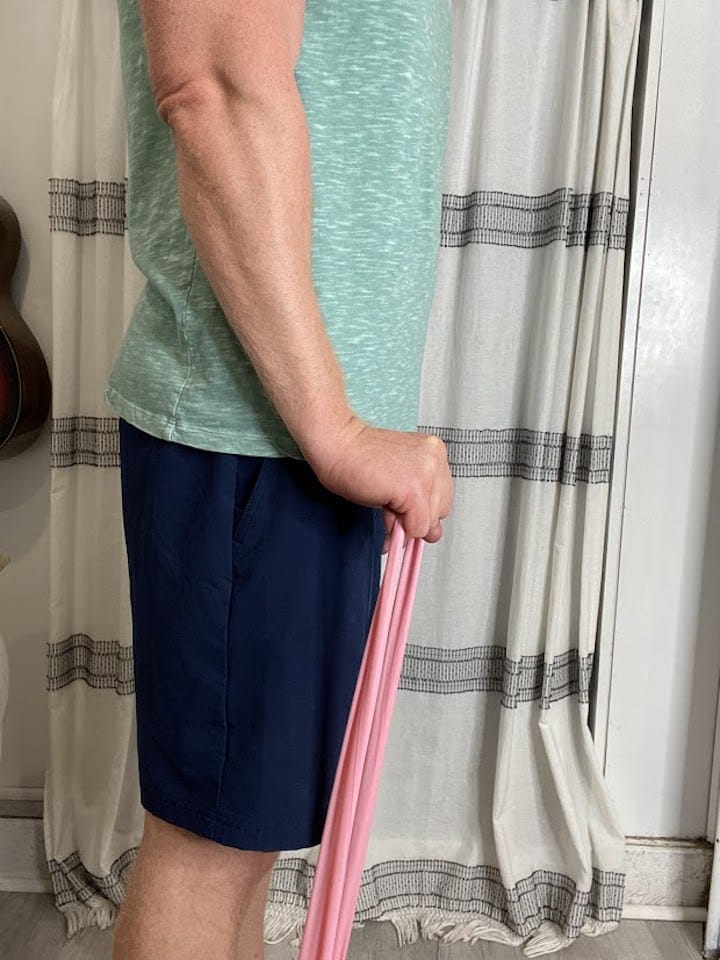
- Position yourself seated with the working arm supported on a table, such as your coffee table. The wrist and hand should be hanging off the edge of the table.
- The palm should be facing down towards the floor, with the wrist straight.
- You can use either a resistance band (light, medium or heavy) anchored under your foot or a light-free weight (2-3 lb).
- Slowly extend the wrist (moving the top of the hand back towards you), then return to neutral.
- Repeat 10 repetitions for 3 sets.
3. Forearm Supination
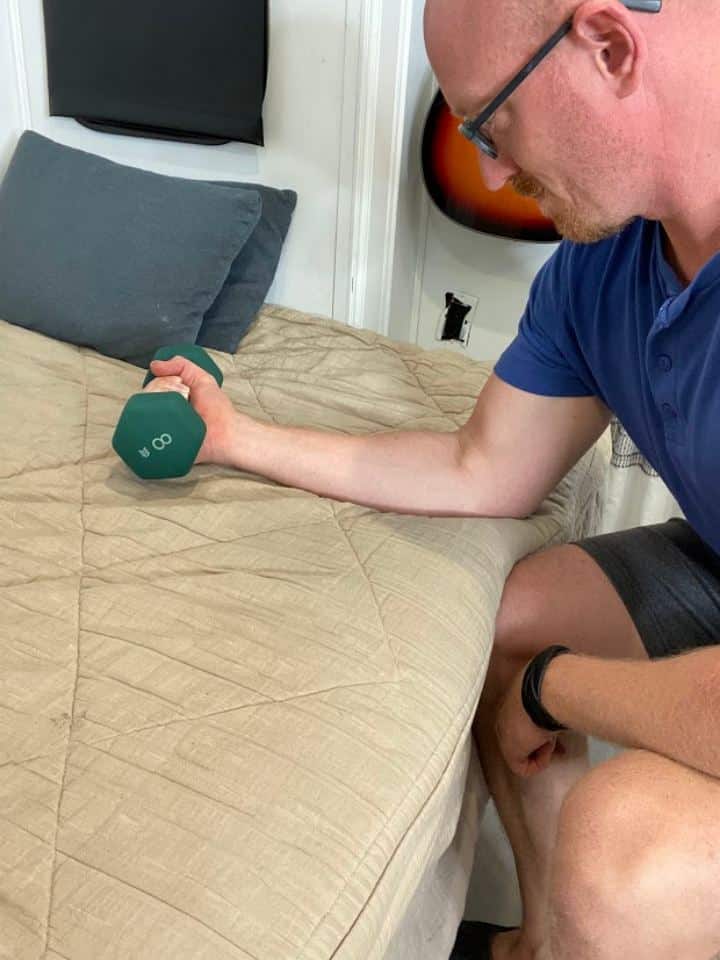
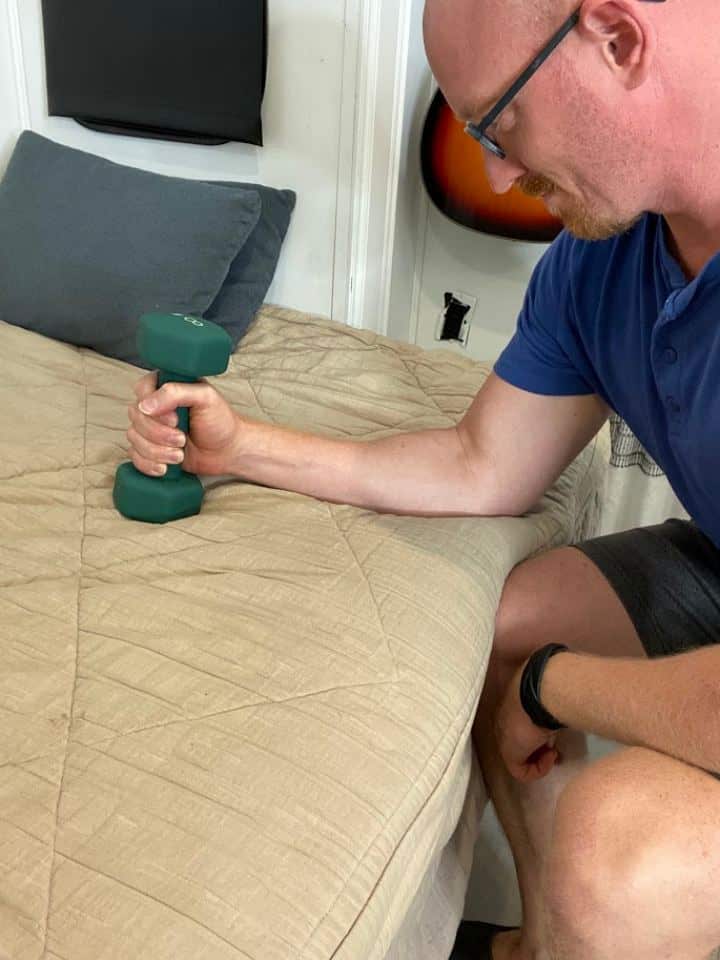
- Begin positioned just like you were for forearm pronation.
- This time, slowly turn the forearm until the palm faces up towards the ceiling, then return to your starting position.
- Repeat 10 repetitions for 3 sets.
4. Forearm Pronation
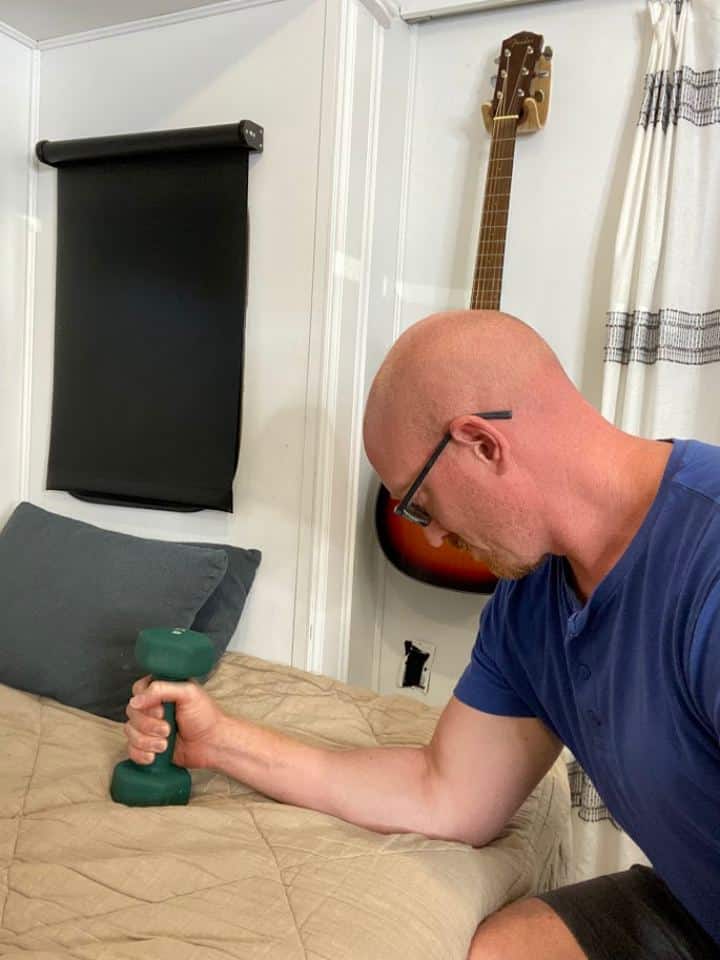
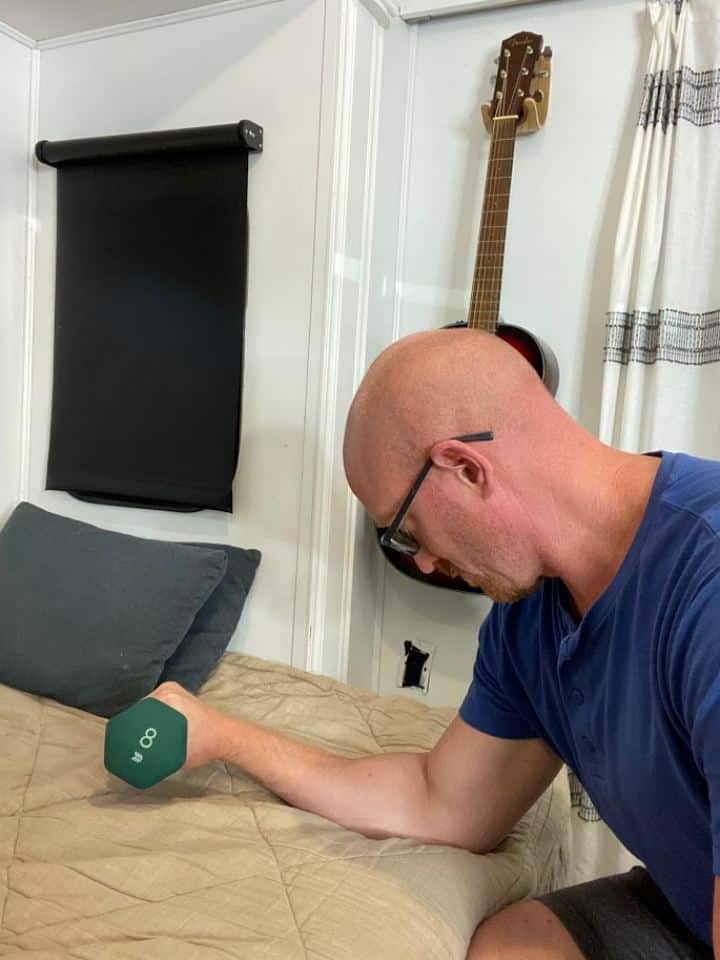
- Begin seated in a chair with the elbow supported on a surface (e.g., kitchen table).
- Position the forearm and wrist so that the thumb is facing the ceiling.
- Slowly turn the forearm until the palm faces down towards the surface, then return to your starting position.
- Repeat 10 repetitions for 3 sets.
5. Bicep Curls
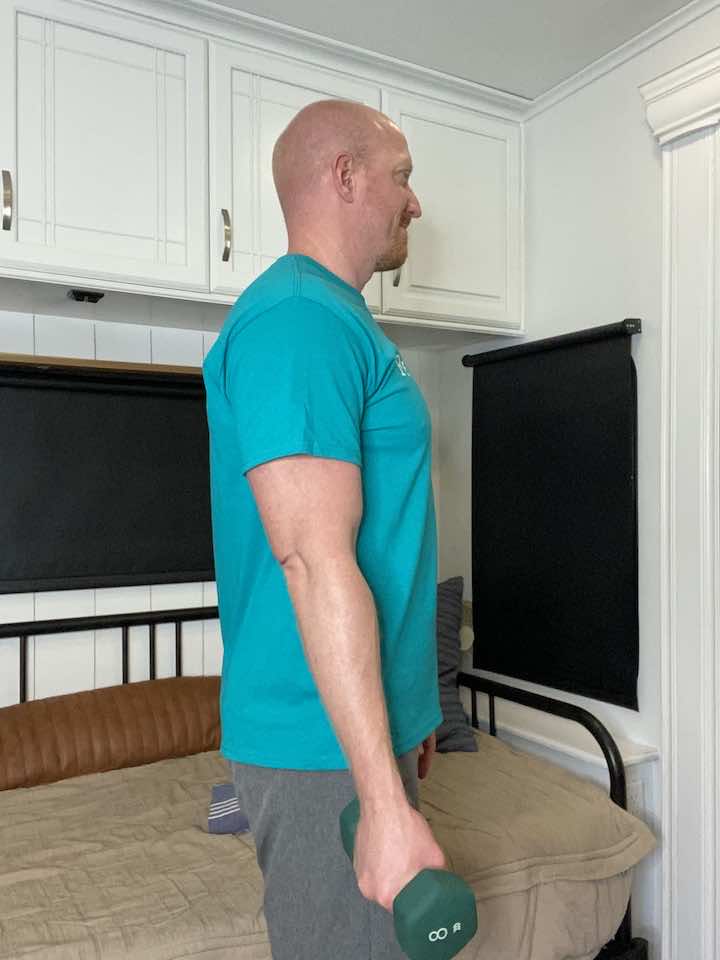
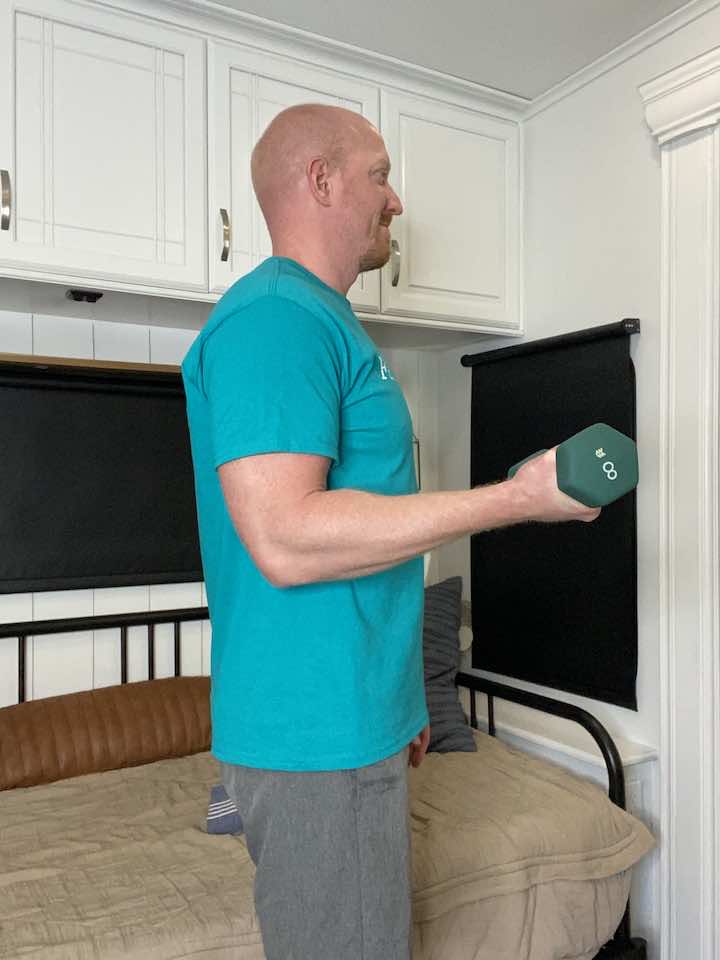
- Begin standing with your feet shoulder-width apart, and your knees slightly bent.
- Hold a dumbbell in each hand with your palms facing forward and arms fully extended at your sides.
- Slowly bend your elbows, curling the dumbbells towards your shoulders while keeping your upper arms stationary.
- Pause briefly at the top of the movement, then slowly lower the dumbbells to your starting position.
- Repeat for 10 repetitions for 3 sets.
6. Tricep Extension with Resistance Band
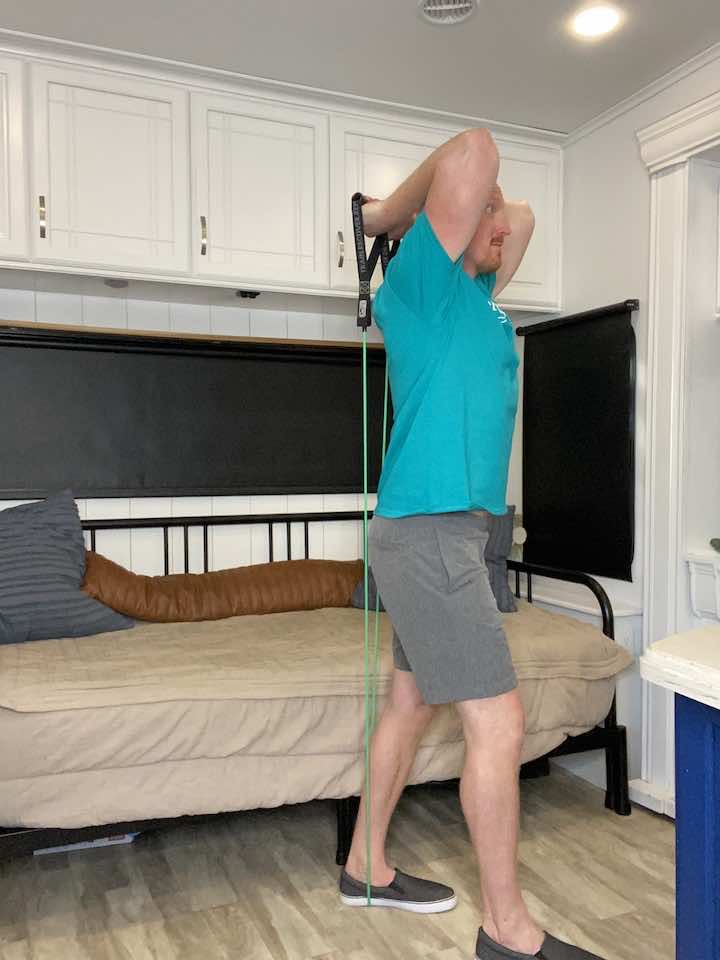
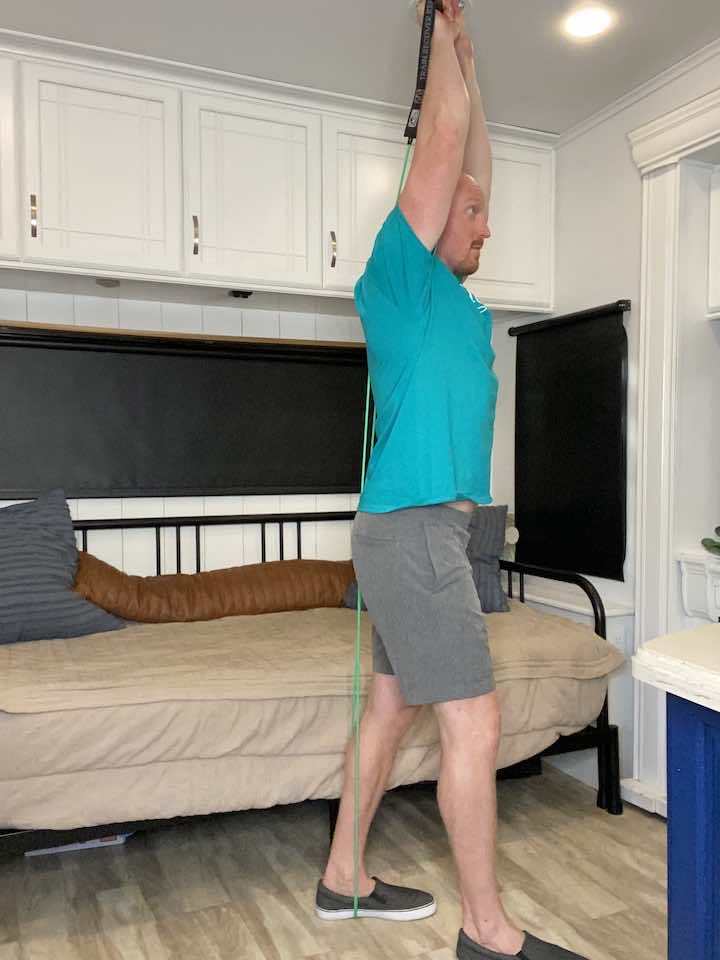
- Stand in the middle of the band with one foot, holding the other end of the band with both hands.
- Extend your arms straight up above your head.
- Lower the band behind your head, bending at the elbow and keeping your elbows pointing forward.
- Extend your arms back up, straightening your elbows.
- Repeat the movement for 10 repetitions, then switch to the other arm.
- Aim for 3 sets of this exercise.
7. Wrist Flexion Stretch
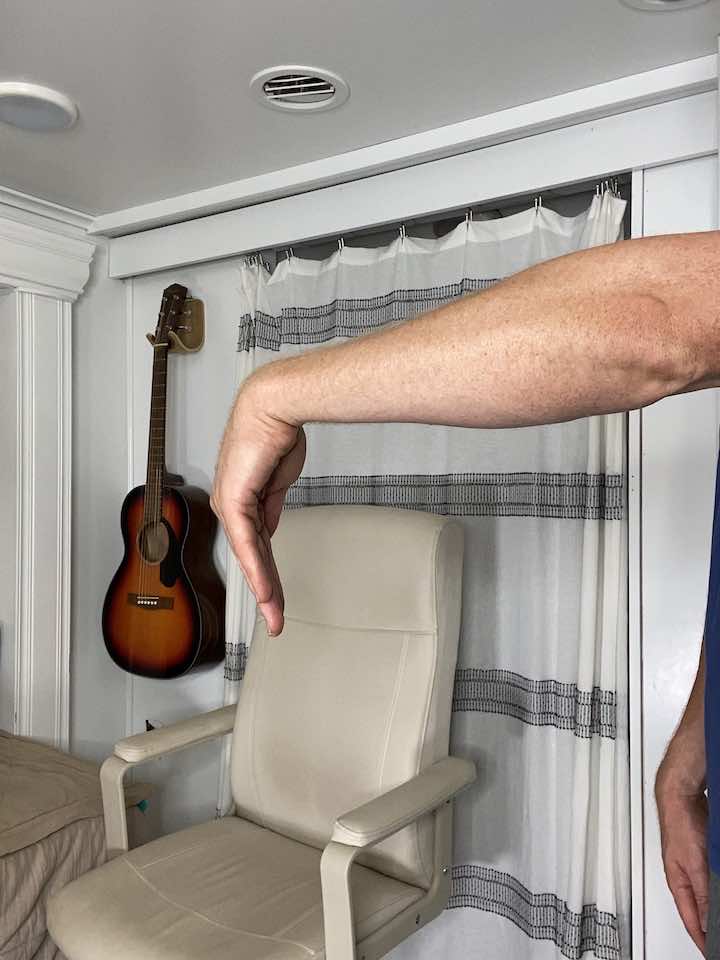
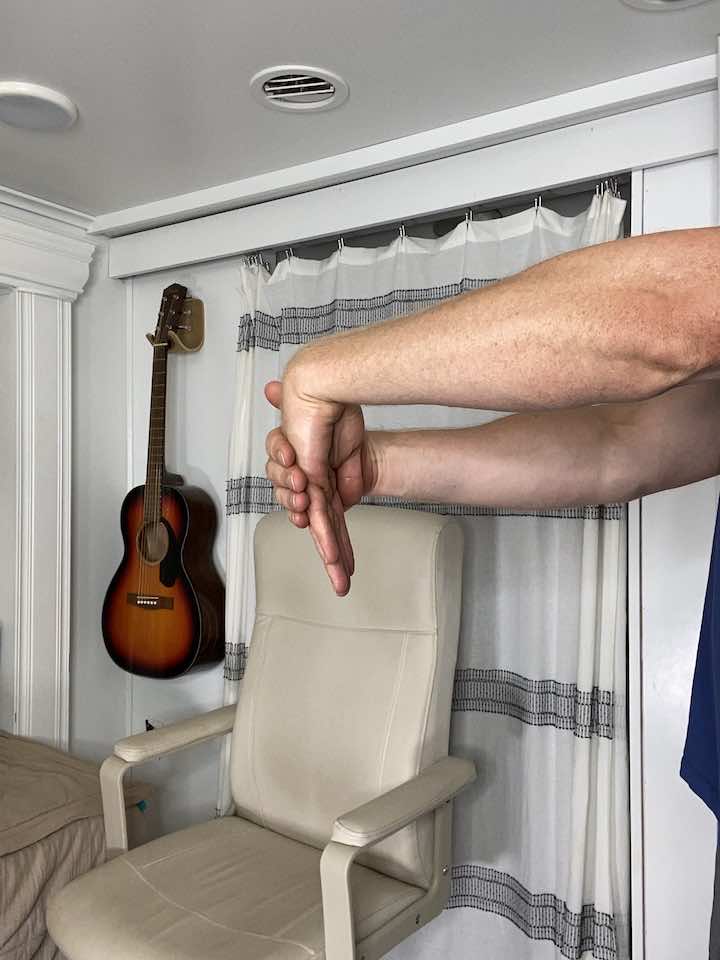
- Straighten your arm and bend your wrist forward as if signaling someone to “come.”
- Use your opposite hand to gently apply pressure across the back of your hand and pull it towards you until you feel a stretch on the top of your forearm.
- Hold for 30 seconds.
- Repeat 5 times, then move to the other arm.
8. Wrist Extension Stretch
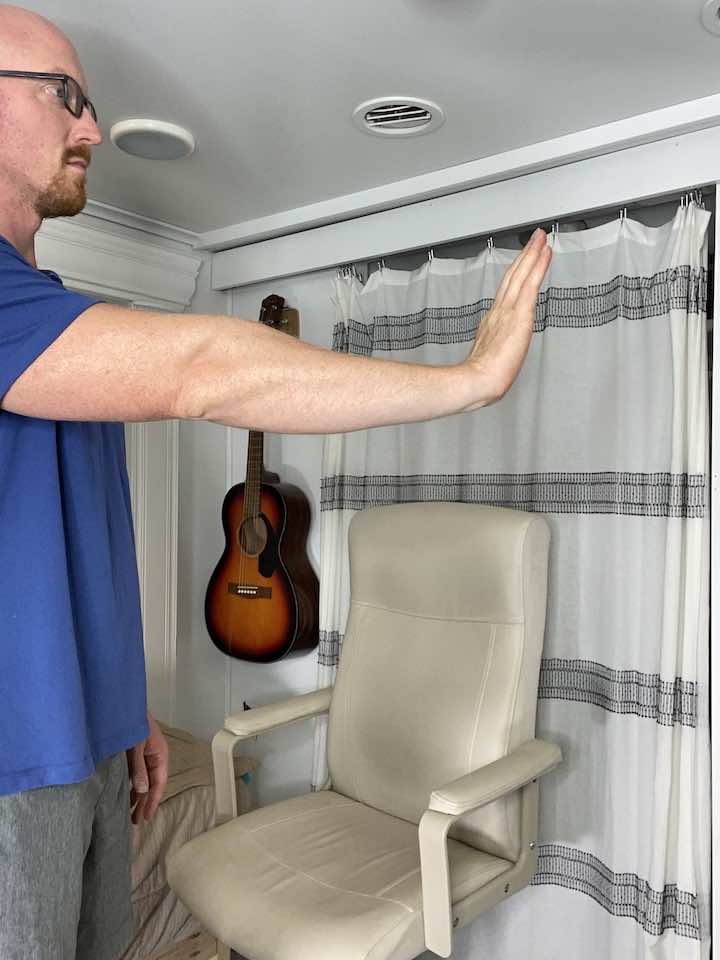
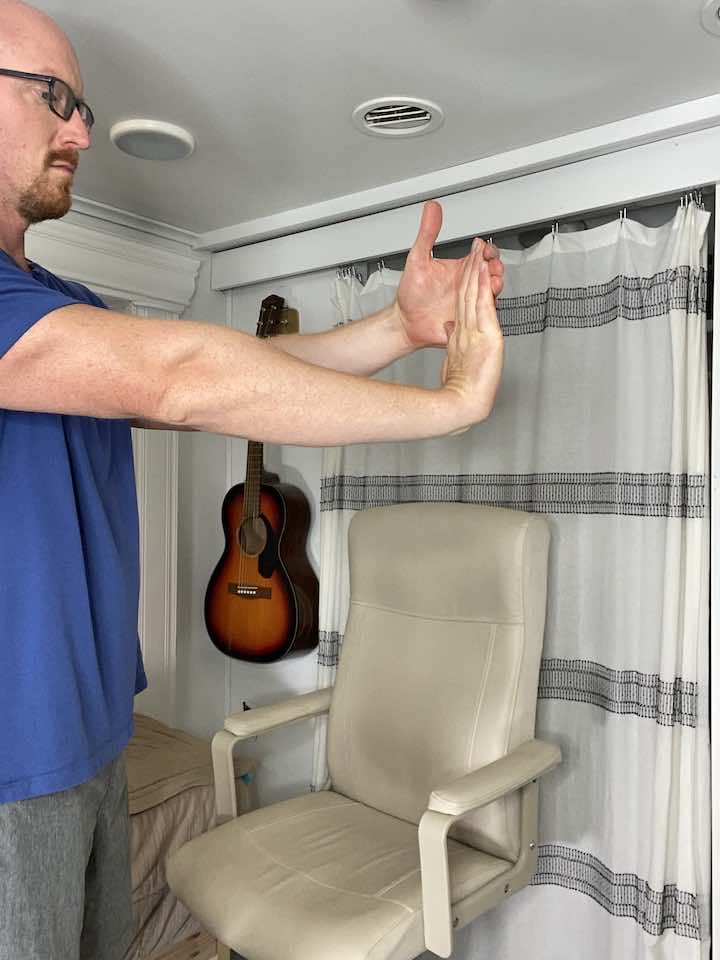
- Straighten your arm and bend your wrist as if signaling someone to “stop.”
- Use your opposite hand to gently apply pressure across the palm and pull it toward it until you feel a stretch inside your forearm.
- Hold for 30 seconds.
- Repeat 3 times, then move to the other arm.
When to See a Doctor?
If your elbow pain persists despite rest and self-care measures, or if the pain is associated with redness, swelling, inability to move the elbow, or injury, seek medical attention. Chronic elbow pain might sometimes indicate a more severe condition that needs medical treatment. So, it’s crucial to listen to your body and act accordingly.
Final Thoughts
In the end, elbow pain can usually be handled with simple steps at home and exercises. But you should see a doctor if the pain keeps going or gets really bad.
Making the muscles around your elbow stronger helps with more than just pain. It helps your arm work better and can make your life better too. So, don’t let elbow pain slow you down. Be active in dealing with it and return to living your life as you want.




